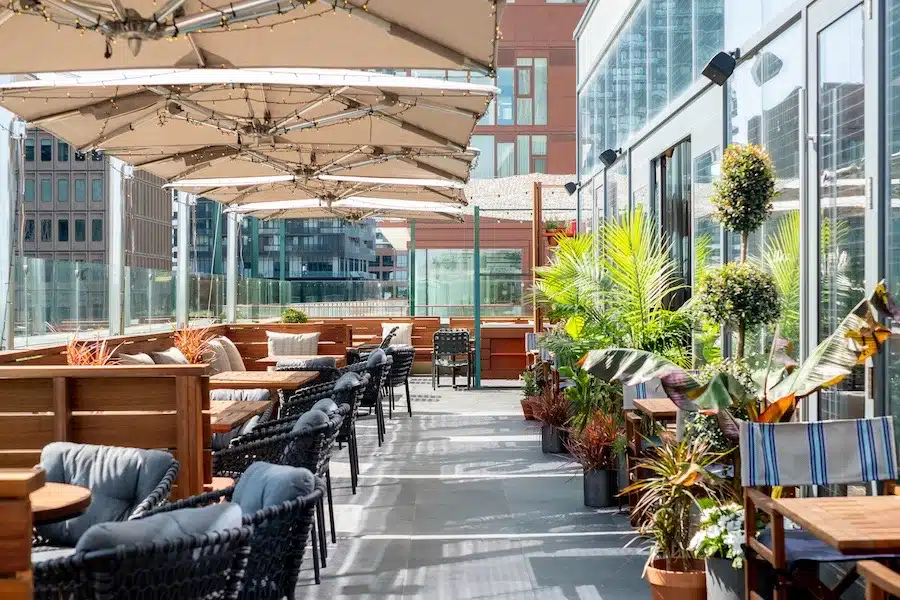Raising the Rooftop Dining Experience
Want to take your restaurant design to the next level? Look into the latest trend of rooftop dining.
Thanks to the pandemic, the restaurant industry will never look at outdoor dining the same way again. It’s now not a bonus to have outdoor dining space, but a necessity. And while customer expectations have changed to expect a more comfortable and longer-lasting patio season, the pandemic has also changed regulations in many markets to allow for easier outdoor service.
“Based on what we know about COVID-19, I think we will see more restaurants redefining the boundary between indoors and out. In the long run, restaurants will have to be adaptable, with seating plans that expand and contract easily and quickly, providing a great experience in every format,” said Rockwell Group founder David Rockwell to Architecture + Design Magazine.
The Rooftop Dining Experience
Now that outdoor dining is standard across restaurants, how can owners make sure they’re delivering a unique, high-end experience? Look up, way up, to your roof.
Restaurants and hospitality industries have been making use out of their rooftop real estate over the last decade with the popularity of green roofs, rooftop gardens, even rooftop beehives. And while rooftop dining was once a hallmark of luxury hotels, it’s now becoming more accessible for businesses of all sizes. And its just one part of a bigger trend in restaurant design that is increasingly trying to recreate vacation spots (especially while international travel is still somewhat limited).
Design Considerations for a Rooftop Dining Space
Designing for a rooftop space is a different matter for a ground-level patio, and certainly for a regular indoor dining room. Keep these elements in mind when planning your design.
- Layout: Even though dining outdoors is safer in a pandemic, you still want to make sure your diners are safely spaced apart instead of feeling crammed – it’s also likely part of your area’s safety codes. Keeping things light will also help you stay within your rooftop’s loadbearing capacity, and it also gives your staff more space to navigate through the tables, accounting for any unpredictable elements from mother nature.
- Weather: Speaking of which, beware of unpredictable weather changes. Umbrellas can be useful – but also dangerous if the wind picks up. Go for sturdy canopies wherever possible, or even sturdier built-in structures.
- Lounge zones: Rooftop spaces have a natural tendency to make diners relax, linger, and socialize. Creating more casual spaces for diners to congregate with their group will go along way to turn a nightcap into an all-nighter.
- Add natural elements: Plants and rooftops are natural fits – they will not only add a luxurious atmosphere, but they will also help absorb sound (and your neighbours will thank you).
- Think all-season: Fireplaces and heaters will be essential for climates that experience cooler temperatures. Amp up the coziness with extra blankets on hand to get the most of your rooftop space year-round.
- Barriers and safety: A big part of the appeal of a rooftop space is the beautiful view it can offer – but when your diners want to get a better look or a great photo, make sure safety comes first. Safety barriers don’t have to be an eyesore – thoughtful design can make them just as attractive as the view itself.

